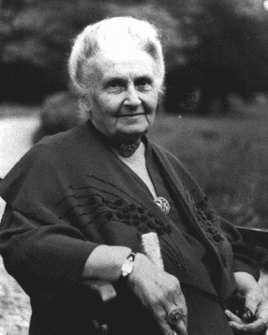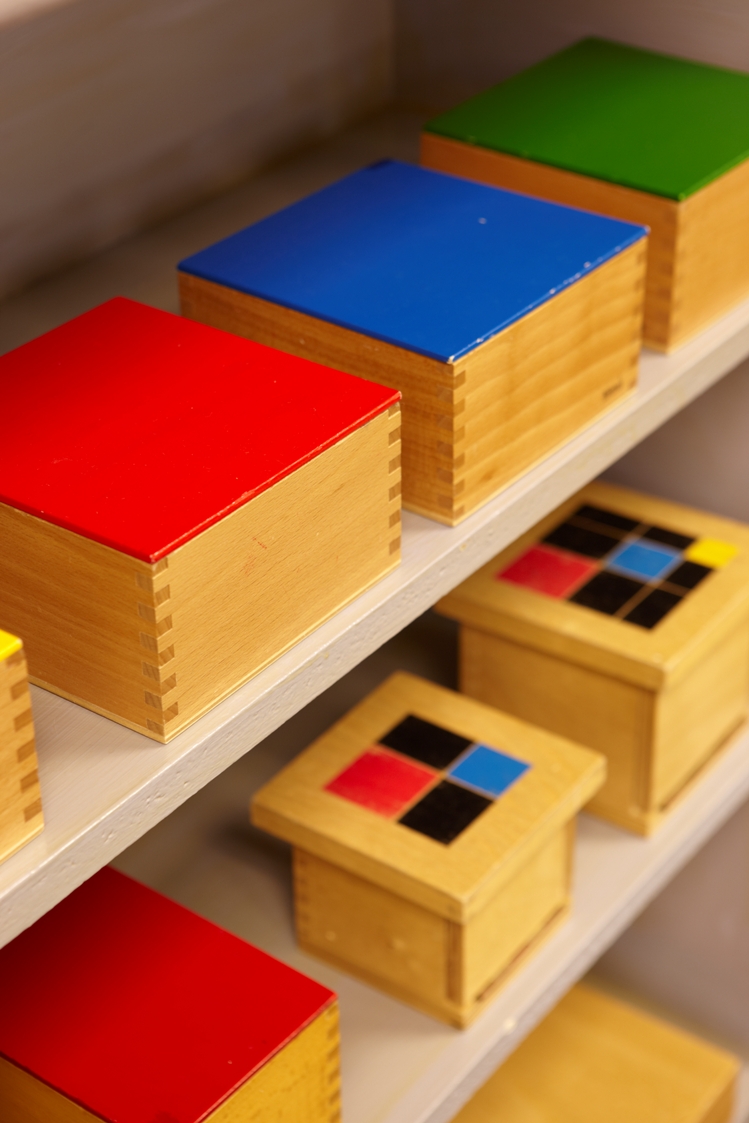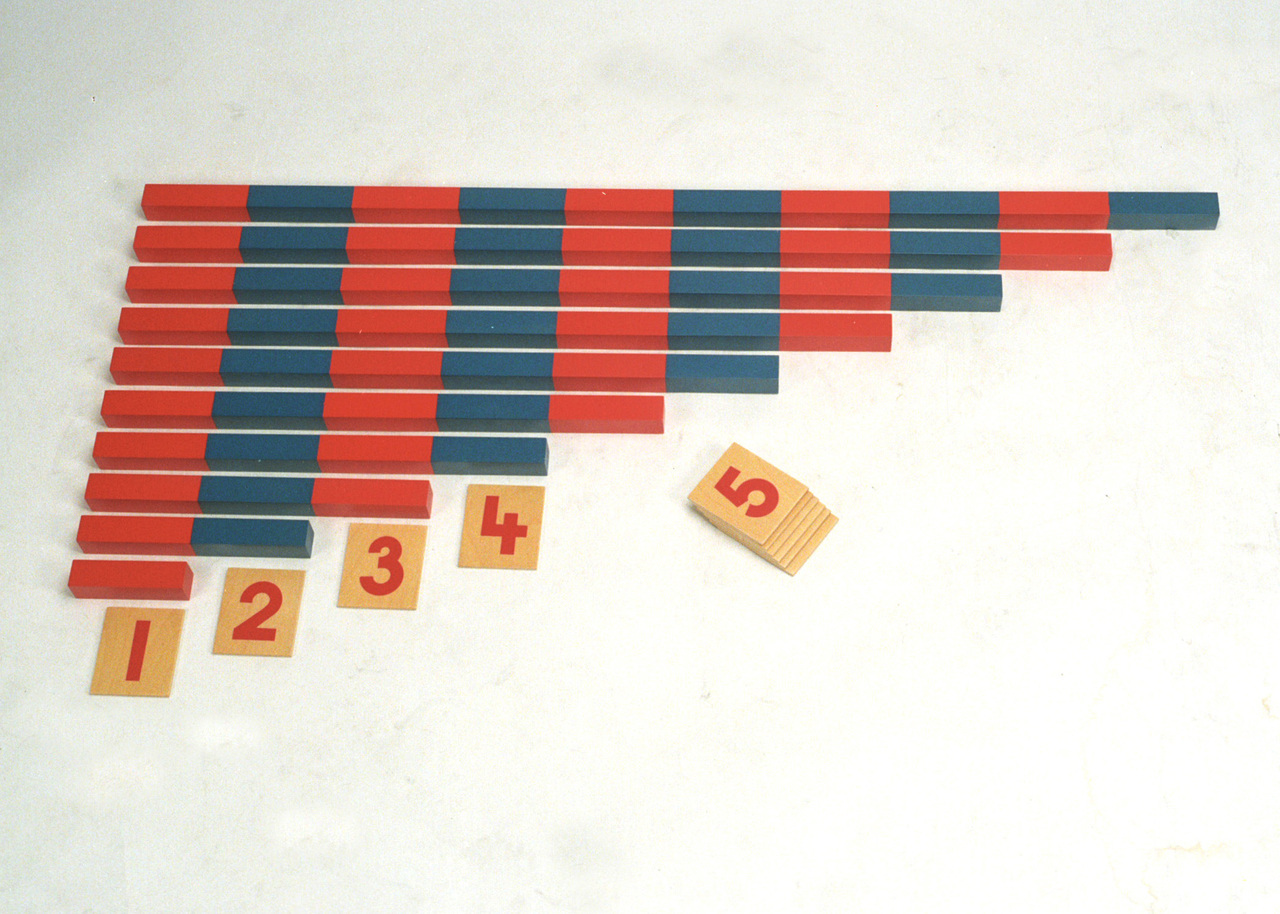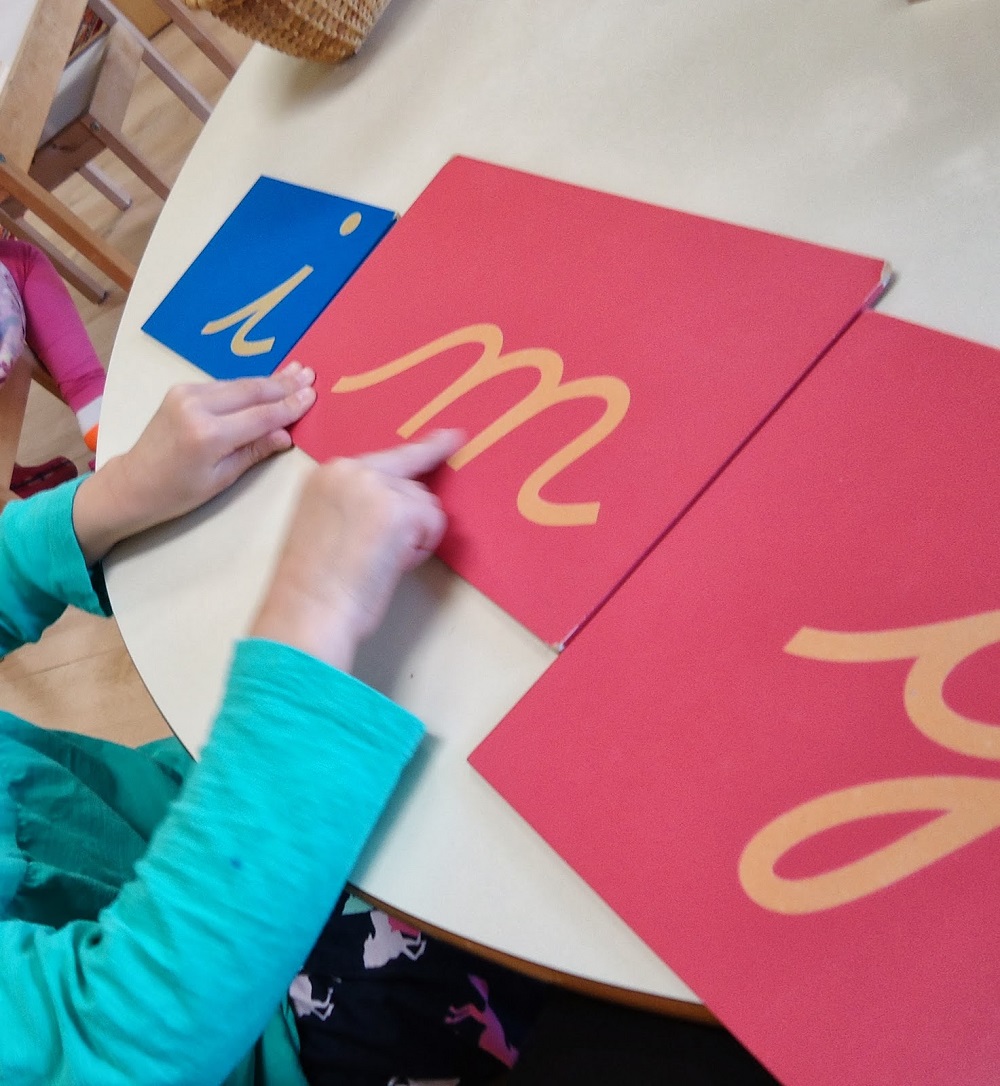Casa Program
Casa Program for children 2.5 - 6 years old
Areas of Learning
The Montessori classroom is set-up with specifically designed materials, taking important aspects of a child's development into account, so as to help them benefit more fully from "periods of sensitivity". The classroom has five sections: Practical Life, Censorial, Language, Mathematical and Cultural. The program also incorporates creative arts, movement and singing.

Dr. Maria Montessori
"Our care of the children should be governed not by the desire to 'make them learn things', but by the endeavor always to keep burning within them the light which is called intelligence."

Practical Life: The Skills of Daily Living
As every parent knows, the preschool child wants to be with adults, to take part in the activities of daily adult life. When a child enters the preschool at three years of age, the Practical Life materials allow them to do just that. The Practical Life area provides the link between home and school. In the classroom, with child sized tools that really work, the young child is able to perform the same activities They have seen adults do: polishing, scrubbing, pouring, sweeping. The pace is unhurried, and an adult is nearby to help if needed but not to interfere.
A three-year-old is, of course, more interested in the scrubbing motion of washing a table than he is getting the table clean. The motions help him gain gross motor control and hand eye coordination, which will enable him to perform successively more precise tasks.
In the Montessori classroom, there are four distinct groups of Practical Life exercises:
Care of Person (buttoning, zipping, combing)
Care of Environment (cleaning, sweeping, gardening, ironing, polishing)
Development of Social Relations (greeting, serving, accepting, apologizing, saying please and thank you)
Movement (balancing, walking on the line, playing the silence game)
It is often difficult for adults to appreciate the sense of accomplishment and pride that children take in mastering practical life skills. To the adult, care of the house and body are necessary chores. The young child, however, is attracted to these activities for very different reasons. They are meaningful, creative, filled with intricate movements and achievements that hold the child’s attention. They are easily understood from start to finish; they lead to greater physical skill, perfection of movement, and concentration.
The young child is attracted to the Practical Life exercises because these activities allow them to function independently in the adult world. After learning how to button their coat, tie their shoes, and wash their hands, they spontaneously repeat the exercises, working on mastery, free from unnecessary adult intervention. These exercises correspond to the child’s sensitive period for refinement of movement and co ordination as well as growing sense of independence. “I can do it myself” is the motto of the young child, and Montessori encourages and fosters this independence.
Sensorial: Exploring the World
Children live in a world of senses. The world is colour, size, dimensions, shape, form, sound, touch, taste and smell. In order to continue their creative task of development, children need to classify and express the impressions they have already received. Through sight, touch, sound, taste and smell, the sensorial Montessori materials enable them to clarify, classify and comprehend their world.
The concepts of long and short, for example, are perceived in the Red Rods of varying lengths. Likewise, rough and smooth are experienced by touching rough sandpaper and smooth paper with the Touch Tablets.
Besides enabling a child to clarify and internalize such concepts as size, shape, color, taste, and sound, the sensorial materials also provide a basis for the development of the skills, such as music, mathematics, or language. Tracing a sandpaper letter “m” with his finger, a child not only sounds the tracing motion as he writes the letter.
Montessori sensorial materials, by applying directly to the young child’s active sensory antennae, make learning a natural result of the child’s desire to explore.


Mathematics: From Concrete to Abstract
Preschool aged children have naturally mathematical minds. They have the capacity to reason, to calculate, and to estimate. They are intensely conscious of quantity, counting pebbles on the beach or cookies for dessert. The concrete Montessori mathematical materials allow these sensorial explorers to begin their mathematical journey from the concrete to the abstract through manipulation, experimentation, and invention.
Rods, spindles, cards, beads, cubes and counters are some of the concrete tools used to symbolize mathematical abstractions. The child does not merely learn to count; they understand the concepts of how many because they hold the amount in their hands. Likewise, they are able to perform the operations of addition, subtraction, multiplication, and division using concrete materials. They are also presented with the possibilities of fact memorization at a young age when combinations like 3+2=5 offer a real fascination and can be absorbed readily.
Like all Montessori materials, the mathematics materials build on each other in increasing complexity so that a child using them will experience the thrill of discovery for them self as part of a natural progression.

Dr. Maria Montessori
"Aesthetic and moral education are also closely connected with the training of the senses. By multiplying sense experiences a developing the ability to evaluate the smallest differences in various stimuli, ones sensibilities are refined and ones pleasures increased."
Language: From Spoken to Written
The joy of learning language is evident to all parents: there is always jubilation over the first word, the funny sentences, the poetic expressions of children, who are so inventive and free with word structure.
The Montessori preschool classroom emphasizes spoken language as the foundation for all linguistic expression. Throughout the entire Montessori environment, the child hears and uses precise vocabulary for all the activities, learning the names of textures, geometric shapes, composers, plants, mathematical operations, and so on. In addition, certain materials in the language area are particularly supportive of spoken language.
The materials for written language first introduce the child to the marvelous 26 letters of the alphabet and their sounds, which make it possible for us to express ourselves in writing. Later, the child may begin composing words, sentences, and whole stories using the Moveable Alphabet.
At this development stage, the child is fascinated with the relationships among letters that form words, the order of words in a sentence. Writing and eventually reading are often acquired.


Dr. Maria Montessori
"Writing is a key to a double gain. It enables the hand to master a vital skill like that of speaking and to create a second means of communication that reflects the spoken word in all its details. Writing is thus dependent upon mind and hand."
Art and Music: Integrated into the Prepared Environment
The arts are not treated as specialty subjects in Montessori. Instead, art and music activities are viewed as forms of self- expression, and, as such, they complement and enhance the children’s ongoing explorations, including the enrichment of vocabulary. The materials or art and music are integrated into the prepared environment as part of the day to day activities of the children.
Various media, such as crayons, chalk, pencils, paint, clay, textiles, and variety of papers, are available, as are opportunities for singing, dancing and playing instruments. Art and music are explored culturally as they connect to historical periods and geographical places. Art and music are explored sensorially through prints hung at child’s height and music listening activities. Even the physical arrangement of the prepared environment is designed with an eye to color, proportion, and overall beauty.
Art and Music are all around us. Montessori education permits a child to view the arts as natural parts of the physical world.




